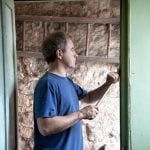When preparing to sell your house, it’s important to understand the significant role that home improvement plays in attracting potential buyers and increasing the value of your property. With the right renovations and enhancements, you can significantly boost your home’s market appeal and its selling price.
One of the key questions that homeowners often ask is “how much home improvement money to expect when selling a house?” In this article, we will explore the importance of home improvement when selling, how to assess what needs improvement in your current home, and how to set a budget for potential home improvements.
Assessing the current condition of your home is crucial before putting it on the market. Identifying areas that need improvement will help you prioritize renovation projects and determine how much money you should invest in them. After assessing your home’s condition, it’s important to set a budget for these improvements. This will involve determining how much you can comfortably invest based on your financial situation and the potential return on investment.
Once you have assessed what needs improvement and set a budget for home improvements, it’s important to consider the potential return on investment. Calculating the expected increase in your home’s value as a result of these improvements will give you an idea of how much money you can expect when selling your house.
Join us as we delve deeper into understanding how various types of home improvements can impact the sale price of your house and maximize your return on investment.
Assessing the Current Condition of Your Home
Before putting your house on the market, it’s crucial to assess the current condition of your home and identify areas that need improvement. This can include both cosmetic and structural elements, such as outdated fixtures, peeling paint, or a leaky roof. Buyers are often willing to pay more for a home that is well-maintained and move-in ready, so investing in necessary improvements can significantly impact your selling price.
One way to determine what needs improvement is to conduct a thorough walk-through of your property, paying close attention to any visible signs of wear and tear. You may also consider hiring a professional home inspector to provide a comprehensive assessment of your home’s condition. They can help identify hidden issues that you may not have noticed, such as electrical problems or plumbing leaks.
It’s important to keep in mind that the extent of the improvements needed will directly influence how much home improvement money you should expect when selling your house. Understanding the specific areas that require attention will allow you to set a realistic budget and prioritize which projects will provide the greatest return on investment.
Data on Common Home Improvement Projects
| Common Home Improvement Projects | Estimated Cost |
|---|---|
| Bathroom Remodel | $10,000 – $25,000 |
| Kitchen Upgrade | $12,000 – $35,000 |
| Roof Replacement | $5,000 – $25,000 |
| Flooring Replacement | $1,500 – $4,500 |
Setting a Budget for Home Improvements
When it comes to selling your house, home improvements can significantly impact the final sale price. However, before diving into any renovations, it’s essential to set a budget and determine how much you can invest in improving your home. This will help you make informed decisions about which projects to prioritize and ensure that you don’t overspend.
Before embarking on any home improvement projects, take a close look at your finances to determine how much you can realistically afford to invest. Consider factors such as your savings, available credit, and any potential return on investment from the sale of your home. It’s also essential to factor in unexpected costs that may arise during the renovation process.
Once you have a clear understanding of your financial situation, prioritize the renovations that will have the most significant impact on the value of your home. Focus on essential areas such as kitchen and bathroom upgrades, curb appeal enhancements, and basic repairs that can greatly improve the overall appeal of your property. By setting a budget and prioritizing key improvements, you can maximize the value of your home without overspending.
If you’re unsure about how much to invest in home improvements, consider seeking guidance from real estate professionals or contractors who can provide insight into which renovations are worth the investment. They can help you create a realistic budget based on the current market conditions and potential return on investment for specific home improvement projects.
By setting a budget for home improvements and determining how much you can invest, you’ll be better equipped to make informed decisions about which renovations will yield the best return on investment when selling your house. Taking the time to assess your finances, prioritize key improvements, and seek professional guidance will ultimately help maximize the value of your home without breaking the bank.
The Potential Return on Investment
When considering home improvement projects in preparation for selling your house, it’s important to assess the potential return on investment (ROI) for each renovation. This will help you determine which improvements are worth the money and effort, and which may not provide the desired increase in home value. Here are a few key factors to consider when calculating the expected increase in home value:
- Market research: Before embarking on any major renovations, it’s essential to research the real estate market in your area. Take note of the selling prices of similar homes with and without specific upgrades to gauge how much value certain improvements can add.
- Cost of the renovation: Consider how much you will need to invest in each home improvement project. This includes materials, labor, and any additional expenses such as permits or design consultations.
- Quality of work: The quality of the renovation work can significantly impact its ROI. A well-executed and professionally finished project is more likely to command a higher return compared to a DIY job that lacks finesse.
Ultimately, the goal is to focus on home improvement projects that offer a high ROI and align with the preferences of potential buyers. By carefully calculating the expected increase in home value for each renovation, you can make informed decisions about where to allocate your budget for maximum impact.
When it comes to assessing the potential ROI for different home improvement projects, some renovations are known for consistently providing a significant increase in home value:
- Kitchen remodel: Upgrading outdated appliances, countertops, and cabinetry can often yield a high ROI as the kitchen is a focal point for many buyers.
- Bathroom updates: Modernizing bathrooms by replacing fixtures, updating tile or flooring, and improving storage can also result in a notable increase in home value.
- Curb appeal enhancements: First impressions matter, so investing in landscaping, exterior painting, or improving the front entryway can attract more buyers and boost your property’s market value.
By focusing on these types of high-impact projects during your pre-sale home improvements, you can increase your chances of recouping your investment when it comes time to sell your house.
Common Home Improvement Projects
When preparing to sell your home, it’s important to focus on home improvement projects that will give you the best return on investment. Some renovations might not add much value to your home, while others can significantly increase its selling price. Understanding which renovations are worth the money can help you make informed decisions about where to allocate your home improvement budget.
One common home improvement project that is often worth the investment is kitchen remodeling. The kitchen is often considered the heart of the home, and potential buyers are willing to pay more for a modern, updated kitchen. Simple changes like repainting cabinets, upgrading appliances, and replacing countertops can make a big impact and attract potential buyers.
Another worthwhile renovation is bathroom updates. Similar to the kitchen, updated bathrooms can add significant value to your home. Small changes like replacing outdated fixtures or regrouting tiles can freshen up the space and appeal to buyers. Additionally, adding a new vanity or upgrading to a walk-in shower can make your bathroom feel more luxurious and increase its appeal.
Investing in curb appeal is also a smart move when it comes to home improvements before selling. First impressions matter, and enhancing your home’s exterior can attract more potential buyers and ultimately impact your sale price. This could include landscaping, painting the front door, or making exterior repairs.
By focusing on these common home improvement projects that offer a high return on investment, you can maximize how much home improvement money expect when selling house. These renovations can help you attract more buyers and negotiate for a higher selling price, ultimately giving you a better return on your initial investment in improving your home’s condition.
Hiring Professionals vs DIY
When you’re considering home improvements before selling your house, one key decision to make is whether to hire professionals or do it yourself (DIY). There are various factors to consider when weighing the costs and benefits of each option.
Hiring professionals for home improvements may mean higher upfront costs, but it can also result in higher quality work and potentially faster completion. For more complex projects such as electrical work, plumbing, or major renovations, hiring a professional is often the safest and most efficient option. Additionally, potential buyers may be more inclined to pay top dollar for a home that has professionally done improvements.
On the other hand, taking the DIY route can save you money on labor costs and give you a sense of accomplishment. Small projects like painting, minor repairs, or landscaping can often be handled by homeowners with a bit of time and effort. However, it’s important to consider your own skills and limitations – attempting a project beyond your expertise could end up costing you more in the long run if it needs to be redone by a professional.
When deciding between hiring professionals and tackling home improvement projects yourself, it’s crucial to assess your own abilities, the scope of the project, and your budget. Ultimately, the goal is to maximize the return on investment for your home improvements when selling your house while staying within budget.
| Pros of Hiring Professionals | Pros of DIY |
|---|---|
| Higher quality work | Saving money on labor costs |
| Faster completion | Sense of accomplishment |
| Potentially higher resale value | Control over project timeline |
Negotiating the Sale Price
When it comes to selling your home, the asking price is crucial in attracting potential buyers and maximizing your return on investment. The home improvements you make can greatly impact the sale price you are able to negotiate. By strategically investing in key areas of your home, you can not only attract more buyers but also increase the perceived value of your property.
Here are some ways that home improvements can impact your asking price:
- Enhanced Curb Appeal: Improving the exterior of your home, such as landscaping, painting, or updating the front door, can make a strong first impression on potential buyers and increase the perceived value of your property.
- Upgraded Kitchen and Bathrooms: Renovating these key areas can have a significant impact on the sale price. Upgraded countertops, fixtures, and appliances can make a big difference in how much a buyer is willing to pay for your home.
- Energy-Efficient Upgrades: Installing energy-efficient windows, appliances, or HVAC systems can not only make your home more attractive to eco-conscious buyers but also contribute to long-term cost savings for the new homeowners.
It’s important to keep in mind that not all home improvement projects will necessarily translate into a higher asking price. That’s why it’s essential to carefully consider which renovations will provide a significant return on investment.
Ultimately, by strategically investing in home improvements that have a high ROI potential, you can significantly impact the sale price of your house and ultimately maximize the amount of money you receive when selling. With careful planning and budgeting, you can ensure that you get the most out of your home improvement efforts when it comes time to sell.
Real-Life Examples
Case Study 1: Kitchen Remodeling
One common home improvement project that has shown to significantly increase the value of a home is kitchen remodeling. A homeowner in a suburban neighborhood invested $20,000 in a complete kitchen renovation, including new appliances, countertops, and flooring.
Upon selling their house just a year later, they were able to increase their asking price by $40,000, effectively doubling their investment. This success story showcases how strategic and well-executed home improvements can lead to substantial returns when selling a house.
Case Study 2: Energy-Efficient Upgrades
Another trend in real estate is the growing interest in energy-efficient homes. A couple looking to sell their urban townhouse opted to invest in energy-efficient upgrades such as solar panels and smart thermostats.
Although the initial cost was $15,000, they were able to increase their home’s value by $25,000 and attract environmentally-conscious buyers who were willing to pay a premium for an eco-friendly property. This example demonstrates how making sustainable home improvements can appeal to a niche market and result in higher returns when selling.
Case Study 3: Curb Appeal Enhancements
Improving the curb appeal of a property is often underrated but can make a significant difference in the selling price. A homeowner spent $5,000 on landscaping, exterior painting, and porch repairs before listing their home for sale. As a result of these enhancements, they were able to sell their house for $15,000 more than originally planned. This exemplifies how relatively minor and budget-friendly home improvements can still have a substantial impact on the final sale price.
These real-life examples showcase how wise investments in home improvement projects can yield impressive returns when selling a house. By carefully evaluating which renovations are worth the money and strategically planning for improvements that align with current market trends, homeowners can maximize their ROI and attract potential buyers willing to pay top dollar for a well-maintained and aesthetically appealing property.
Conclusion
In conclusion, it’s essential to recognize the significance of home improvement when selling your house. Assessing the current condition of your home will help determine what areas need improvement and how much you can invest in these updates. Setting a budget for home improvements is crucial to ensure that you don’t overspend and accurately calculate the potential return on investment.
When considering common home improvement projects, focus on renovations that are worth the money and have the potential to increase the value of your home. Whether you decide to hire professionals or take on DIY projects, weigh the costs and benefits to make the most out of your budget.
Negotiating the sale price of your house can significantly be impacted by the home improvements you’ve made. Real-life examples show success stories of home sellers who have maximized their ROI by investing in strategic and impactful updates.
Ultimately, understanding how much home improvement money to expect when selling a house requires careful planning, budgeting, and a keen understanding of which projects will generate a favorable return on investment. By leveraging these insights and making informed decisions about where to allocate your resources, you can maximize your returns and successfully sell your house for a higher price.
Frequently Asked Questions
What Is the 30 Percent Rule of Home Renovation?
The 30 percent rule of home renovation suggests that you should spend no more than 30 percent of your home’s value on renovations. This rule helps homeowners avoid over-improving their property and potentially losing money when they sell.
What Is the ROI on Home Improvements Before Selling?
The return on investment (ROI) on home improvements before selling can vary depending on the type of renovation. Generally, kitchen and bathroom remodels tend to have a higher ROI compared to other projects. It’s important to carefully consider which improvements will bring the most value when selling.
How Do You Calculate Renovations?
Calculating renovations involves assessing the costs of materials, labor, permits, and any additional expenses associated with the project. Homeowners should also consider potential added value to their property and potential resale value when determining if a renovation is worth pursuing.

I’m thrilled to have you here as a part of the Remodeling Top community. This is where my journey as an architect and remodeling enthusiast intersects with your passion for transforming houses into dream homes.





